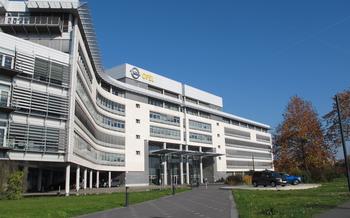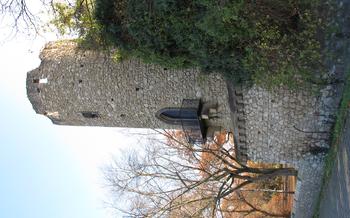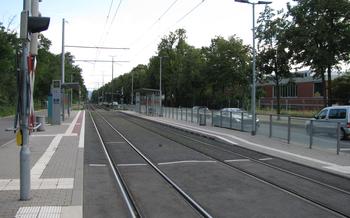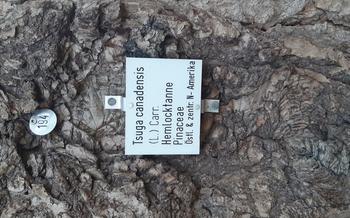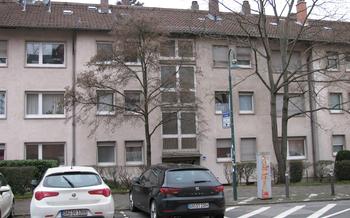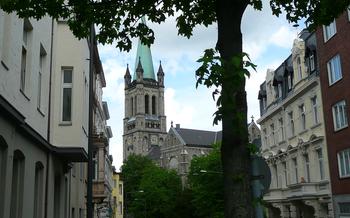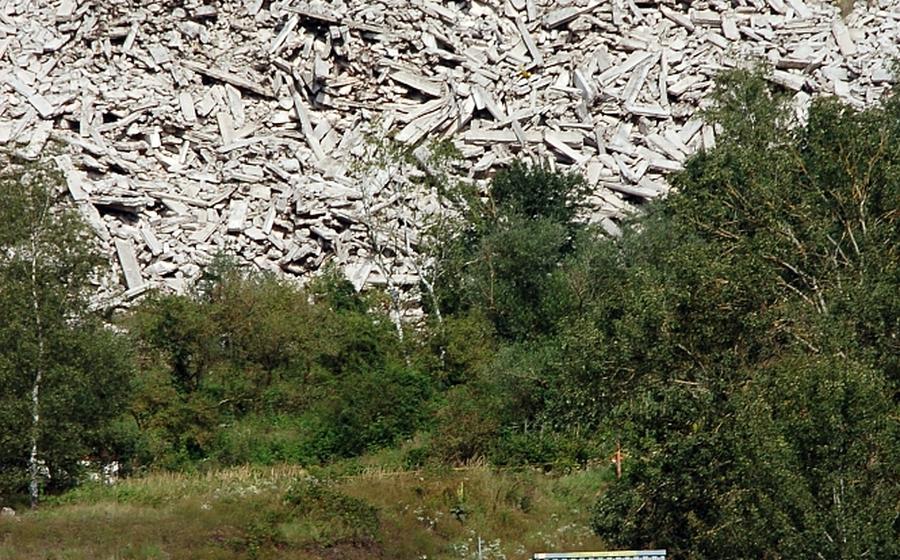
Grube Messel Pit Fossil Site
- Unveiling the Geological Treasures
- A Glimpse into Ancient Life:
- The Messel Pit Museum: A Gateway to Discovery
- Exploring the Fossil Collection
- Witnessing the Fossil Excavation Process
- Delving into the Eocene Landscape
- Interactive Learning Experiences
- Unveiling the Secrets of the Fossil Forest
- The Eocene Fauna: A Tapestry of Life
- Engaging with Paleontological Research
- Attending Special Events and Workshops:
- Exploring the Surrounding Area
- Insider Tip: Advance Planning and Guided Tours
Unveiling the Geological Treasures
The Grube Messel Pit is a captivating testament to the geological forces that shaped our planet millions of years ago. Formed during the Eocene epoch, approximately 47 million years ago, the pit provides a unique glimpse into a period of profound environmental change. The site's geological layers, comprised of oil shale, clay, and sandstone, reveal a fascinating story of ancient volcanic activity, shifting landscapes, and the gradual formation of the Messel Lake. This unique geological setting created an environment conducive to the exceptional preservation of fossils, making the Messel Pit a treasure trove of paleontological discoveries.
A Glimpse into Ancient Life:
The Grube Messel Pit has yielded an astonishing array of fossilized organisms, providing a unique window into the Eocene epoch's vibrant biodiversity. From delicate plant fossils to the skeletal remains of long-extinct animals, the site offers an unparalleled glimpse into the evolutionary processes that shaped life on Earth.
Among the plant fossils discovered at Messel are fossilized leaves, fruits, and seeds, representing a diverse array of species from the Eocene epoch. These plant fossils provide insights into the paleoclimate and vegetation of the region, reconstructing the ancient forest ecosystem that once thrived in this area.
Equally remarkable are the fossilized animal remains, including mammals, birds, reptiles, amphibians, and insects. The exceptional preservation of these fossils allows paleontologists to study the anatomy and behavior of these ancient creatures in unprecedented detail. The Messel Pit fossils have revealed new species and provided crucial evidence for understanding the evolutionary relationships and adaptations of various animal groups.
The diversity of fossilized organisms at the Grube Messel Pit not only offers a glimpse into the Eocene epoch's remarkable biodiversity but also contributes to our understanding of the evolutionary history of life on Earth. Through the study of these fossils, paleontologists gain valuable insights into the processes of speciation, adaptation, and extinction, shedding light on the complex tapestry of life that existed millions of years ago.
The Messel Pit Museum: A Gateway to Discovery
At the heart of the Grube Messel Pit Fossil Site lies the Messel Pit Museum, an immersive and educational center that brings the wonders of paleontology to life. Through interactive exhibits, hands-on activities, and guided tours, the museum provides visitors with a comprehensive understanding of the site's significance and its remarkable fossil discoveries.
Interactive displays showcase the diversity of fossilized organisms found at the Messel Pit, from ancient plants and insects to mammals, birds, and reptiles. Visitors can marvel at the intricate details preserved in these fossils, gaining insights into the evolutionary processes that shaped life on Earth millions of years ago.
Educational programs and guided tours led by experienced paleontologists offer visitors an in-depth exploration of the site's geological formations, fossil excavation techniques, and the ongoing scientific research conducted at the Messel Pit. These tours provide a unique opportunity to learn from experts and gain a deeper appreciation for the importance of paleontological research.
Hands-on activities, such as fossil identification workshops and simulated excavations, allow visitors to engage with the fossils and experience the thrill of discovery firsthand. These activities foster a sense of wonder and curiosity, particularly among young visitors, inspiring them to pursue further exploration in the field of paleontology.
In addition to its exhibits and activities, the Messel Pit Museum also houses research facilities where scientists from around the world collaborate to study the fossils and contribute to our understanding of Eocene ecosystems. Visitors can witness the behind-the-scenes work of paleontologists and gain insights into the ongoing quest to unlock the secrets of the Messel Pit.
Exploring the Fossil Collection
At the heart of the Grube Messel Pit experience lies its remarkable fossil collection, a treasure trove of ancient life preserved in exquisite detail. The museum boasts an extensive array of fossils, each a testament to the diversity and complexity of life during the Eocene epoch. Among the highlights are the iconic Messel Pit horse, a remarkably complete skeleton that provides valuable insights into the evolution of early equines. Other notable specimens include the eerie yet fascinating "Urvogel," an early bird with a unique combination of reptilian and avian characteristics, and the exquisitely preserved remains of Eocene primates, offering a glimpse into the origins of our own lineage. Each fossil in the collection holds a story, waiting to be deciphered, shedding light on the remarkable biodiversity and evolutionary processes that shaped the ancient world. Ongoing research and new discoveries continue to expand our understanding of these fossilized treasures, making the Grube Messel Pit Fossil Site an invaluable resource for paleontological research and a source of wonder and inspiration for visitors of all ages.
Witnessing the Fossil Excavation Process
The Grube Messel Pit Fossil Site provides an exceptional opportunity for visitors to witness the exciting process of fossil excavation firsthand. Participate in live demonstrations and workshops conducted by experienced paleontologists and learn about the intricate techniques and challenges involved in uncovering these ancient treasures. Get hands-on experience using specialized tools and equipment, and discover the meticulous care and precision required to extract fossils from the surrounding sediment. These interactive sessions offer a unique glimpse into the world of paleontological research and provide a deeper understanding of the significance of preserving our fossil heritage.
Delving into the Eocene Landscape
To fully immerse visitors in the ancient world, the Grube Messel Pit Fossil Site features a reconstructed Eocene landscape. This meticulously crafted recreation transports visitors back in time, allowing them to visualize the vibrant ecosystem that once thrived in this region. Life-size models of prehistoric animals, including the iconic Messel Pit horse, roam the reconstructed landscape, providing a glimpse into their behavior and interactions. Visitors can stroll through the recreated Eocene forest, admiring the lush vegetation and imagining the sounds of prehistoric birds and insects filling the air. This immersive experience not only captivates the senses but also offers a valuable educational tool, enabling visitors to gain a deeper understanding of the Eocene epoch and its diverse array of life forms.
Interactive Learning Experiences
The Grube Messel Pit Fossil Site offers a range of interactive learning experiences designed to engage visitors of all ages in the fascinating world of paleontology. Educational programs tailored for students and families provide hands-on activities, workshops, and seminars that delve into the intricacies of fossil identification, evolutionary processes, and the significance of the Eocene epoch. Whether it's uncovering the secrets of fossilized plants or exploring the diverse fauna that once roamed this ancient landscape, these interactive programs bring paleontology to life and foster a deeper appreciation for the scientific wonders of the Messel Pit.
Unveiling the Secrets of the Fossil Forest
Deep within the confines of the Messel Pit, a hidden treasure lies concealed—an ancient forest, preserved in remarkable detail by the passage of time. Fossilized trees and plant remains stand as silent witnesses to a bygone era, offering invaluable insights into the paleoclimate and vegetation of the Eocene epoch.
The fossil forest is a testament to the diverse and thriving ecosystems that existed millions of years ago. Ancient tree trunks, their gnarled forms etched with the stories of time, rise from the earth, creating an eerie yet awe-inspiring spectacle. Fossilized leaves, seeds, and fruits provide glimpses into the plant life that carpeted the land during the Eocene, shedding light on the intricate web of life that sustained this prehistoric world.
Understanding the Eocene forest ecosystem is crucial for piecing together the puzzle of Earth's history. By studying the fossilized flora, scientists can infer climatic conditions, soil composition, and the interactions between plants and animals. This knowledge contributes to our understanding of how ecosystems have evolved over time and the factors that have shaped the diversity of life on our planet.
Exploring the fossil forest at the Messel Pit is a journey through time, offering a rare opportunity to witness the remnants of an ancient world. As you wander among the fossilized trees, you can almost hear the echoes of a forgotten forest, rustling with life and teeming with activity. It is an experience that transports you to a distant past, leaving you with a profound appreciation for the interconnectedness of life and the enduring legacy of the Eocene epoch.
The Eocene Fauna: A Tapestry of Life
The Eocene epoch was a period of remarkable biodiversity, and the Messel Pit Fossil Site offers a glimpse into this vibrant tapestry of life. From mammals and birds to reptiles, amphibians, and insects, the site has yielded an astonishing array of fossilized remains, providing invaluable insights into the evolutionary relationships and adaptations of these ancient creatures.
Among the most iconic fossils discovered at the Messel Pit are the remains of Darwinius masillae, an early primate that has been dubbed "Ida" by scientists. Ida's remarkably well-preserved skeleton has shed light on the evolutionary transition from primitive primates to modern humans. Other notable finds include the giant bird Gastornis, the flightless Palaeeudyptes, and the bizarrely proportioned Messelornis, a bird with a long, slender beak and short wings.
The Messel Pit fauna also includes a diverse array of reptiles, including snakes, lizards, and turtles. One of the most intriguing discoveries is the Messelherpeton, a small, burrowing reptile that resembled a modern-day salamander. Amphibians are also well-represented at the site, with fossils of frogs, salamanders, and caecilians providing insights into the early evolution of these creatures.
Insects, too, were abundant in the Eocene epoch, and the Messel Pit has yielded a wealth of fossilized insects, including beetles, flies, wasps, and ants. These fossils provide valuable information about the ancient insect fauna and its role in the Eocene ecosystem.
The diversity and abundance of the Messel Pit fauna make it one of the most important sites for studying Eocene biodiversity. The fossils from this site have helped scientists to reconstruct the ancient ecosystems of the Eocene epoch and to understand the evolutionary relationships and adaptations of the animals that inhabited this remarkable period in Earth's history.
Engaging with Paleontological Research
The Grube Messel Pit Fossil Site provides an exceptional opportunity for visitors to engage with paleontological research firsthand. Visitors can interact with paleontologists, learning about their ongoing research projects and the significance of the Messel Pit fossils for scientific research. This interaction offers a unique insight into the world of paleontology and the role it plays in shaping our understanding of Earth's history. Visitors can also witness the meticulous process of fossil preparation, from cleaning and conservation to restoration. Understanding the delicate nature of fossil preservation and the importance of preserving fossil heritage adds depth to the visitor experience.
The engagement with paleontological research extends beyond passive observation. Visitors can actively participate in fossil identification activities and workshops, delving deeper into the fascinating world of paleontology. These hands-on experiences provide a deeper understanding of the techniques and methodologies used by paleontologists to uncover the secrets of the past.
Overall, the Grube Messel Pit Fossil Site offers a unique opportunity for visitors to engage with paleontological research, fostering a deeper appreciation for the field and its contributions to our understanding of Earth's history and the evolution of life.
Attending Special Events and Workshops:
The Grube Messel Pit Fossil Site regularly hosts a variety of special events and workshops that cater to visitors of all ages and interests. These events provide unique opportunities to delve deeper into the world of paleontology and engage with experts in the field.
Fossil-themed events, such as workshops, lectures, and demonstrations, are held throughout the year. These events offer hands-on fossil exploration activities, where visitors can learn about fossil identification, preparation, and conservation. Family-friendly activities and educational programs are also organized, making the site an ideal destination for families with children.
Attending these special events and workshops not only enhances the visitor experience but also fosters a sense of community and appreciation for paleontology. Engaging with the local community and participating in these events allows visitors to connect with like-minded individuals and contribute to the preservation and understanding of our fossil heritage.
Exploring the Surrounding Area
Beyond the captivating experiences offered by the Grube Messel Pit Fossil Site, visitors can immerse themselves in the natural beauty and cultural heritage of the surrounding region. Picturesque hiking trails wind through serene landscapes, inviting visitors to explore the area's diverse flora and fauna. Nearby towns and villages, such as Messel and Ober-Ramstadt, offer a glimpse into the region's rich history and traditions. These charming destinations boast well-preserved half-timbered houses, historic churches, and inviting cafes, providing a delightful contrast to the prehistoric wonders of the Messel Pit.
Venturing further afield, visitors can delve into the cultural and historical heritage of the region. Darmstadt, the vibrant capital of Hesse, lies just a short distance away and offers a wealth of cultural attractions, including world-class museums, theaters, and art galleries. The city's vibrant atmosphere and diverse culinary scene make it an ideal destination for those seeking a blend of history, culture, and modern amenities.
Exploring the surroundings of the Grube Messel Pit Fossil Site enhances the overall travel experience, providing visitors with a deeper understanding of the region's natural and cultural heritage. Whether it's embarking on a scenic hike, discovering charming villages, or immersing oneself in the cultural offerings of Darmstadt, there's something for every traveler to enjoy.
Insider Tip: Advance Planning and Guided Tours
To make the most of your visit to the Grube Messel Pit Fossil Site, planning ahead is crucial. Pre-booking tickets online or through authorized tour operators is highly recommended, especially during peak tourist seasons. This will guarantee your entry and avoid any disappointment or long waiting times.
Guided tours led by experienced paleontologists or knowledgeable guides offer an unparalleled opportunity to delve deeper into the site's significance and history. These tours provide insightful explanations, anecdotes, and scientific details that enhance the visitor experience. They help you appreciate the unique features of the site, understand the geological processes that shaped it, and gain a deeper understanding of the fossilized organisms and their significance.
Exploring the Grube Messel Pit Fossil Site with a guide allows you to ask questions, engage in discussions, and gain a more comprehensive understanding of the site's importance for paleontological research. Whether you're a seasoned fossil enthusiast or a curious traveler, a guided tour will enrich your visit and leave you with lasting memories.
